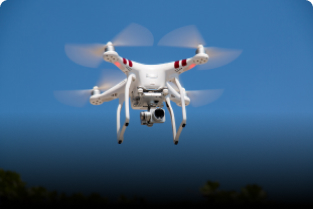The Bayraktar TB-2, a Turkish-made unmanned combat aerial vehicle (UCAV), has gained global attention for its impressive performance in modern warfare. One of the unique design features of this drone is its rear-mounted (tail) engine — a decision that may seem unusual compared to many aircraft designs where engines are typically located in the front or on the wings. However, this placement is a carefully considered engineering choice that enhances the drone’s efficiency, stability, and operational effectiveness.
Let’s explore the key reasons why the Bayraktar TB-2’s engine is positioned in the tail section.
1. Improved Aerodynamic Efficiency
The rear-mounted engine design helps maintain a cleaner aerodynamic profile at the front of the drone. Without a bulky engine or propeller obstructing the airflow, the TB-2 achieves smoother air movement over its fuselage, reducing drag and enhancing flight stability. This streamlined configuration contributes to longer endurance and better fuel efficiency, both critical for long surveillance or strike missions.
2. Enhanced Sensor and Camera Performance
The Bayraktar TB-2 is primarily used for surveillance, reconnaissance, and precision strikes, relying on high-resolution cameras and sensors mounted in its nose section. Placing the engine and propeller at the back ensures that the front section remains unobstructed, providing a clear field of view for these sensors.
This layout prevents vibration and propeller interference from distorting camera feeds, allowing the drone to capture stable and accurate imagery during reconnaissance missions.
3. Reduced Propeller Interference with Payload Delivery
In combat operations, the TB-2 often carries laser-guided munitions mounted beneath its wings. A rear engine prevents propeller turbulence from affecting the release and trajectory of these payloads. By keeping the front and lower sections clear, the drone can safely deploy weapons without aerodynamic disruptions or risk of collision with the propeller.
4. Better Cooling and Safety
The tail-mounted configuration provides more space for efficient cooling of the engine. Air inlets positioned near the rear can manage heat dissipation effectively while minimizing the risk of overheating other sensitive components in the drone’s body.
Additionally, keeping the hot engine at the back reduces thermal interference with front-mounted electronics and ensures safer operations in high-temperature environments.
5. Balanced Weight Distribution and Stability
By placing the heavy engine at the back, designers achieve a balanced center of gravity, crucial for maintaining stable flight characteristics. This configuration allows the TB-2 to handle the weight of payloads and sensors at the front without compromising aerodynamic stability. As a result, the drone maintains steady flight even under variable load conditions.
6. Noise Reduction for Stealth Operations
A rear propeller design naturally pushes noise backward, away from the direction of flight. This setup makes the TB-2 quieter when approaching targets, which is advantageous for surveillance and reconnaissance missions that require a degree of stealth. Reduced acoustic detection improves the drone’s survivability during sensitive operations.
Conclusion
The tail-mounted engine of the Bayraktar TB-2 isn’t just an aesthetic choice — it’s a strategic engineering decision that enhances performance, endurance, safety, and stealth. By placing the engine in the rear, designers have maximized aerodynamic efficiency, improved camera visibility, and optimized payload handling.

